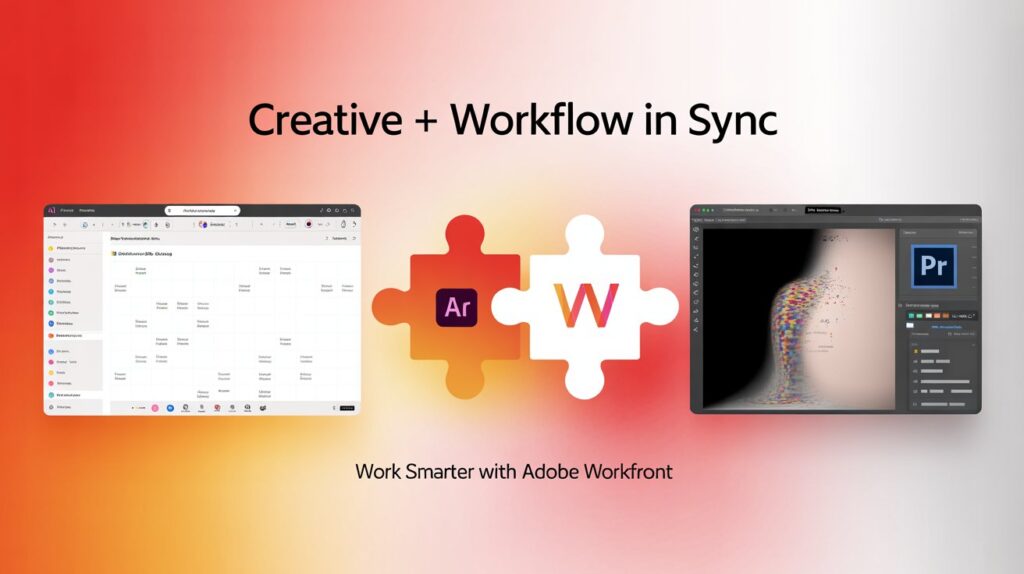In creative teams, deadlines are everything. Between juggling design briefs, client feedback, and last-minute scope changes, even the most talented teams can fall behind, not for lack of effort, but due to a lack of streamlined workflows. That’s where the integration between Adobe Workfront and Adobe Creative Cloud really shines.
Together, these two tools remove silos, reduce repetitive work, and give designers and project managers exactly what they need: more time to focus on the work that matters.
Let’s break down why this integration is a game-changer, how it works, and what it means for Adobe Commerce Partners trying to hit creative deadlines without burning out.
Planning for Success with Workfront Scenario Planner
Workfront Scenario Planner is another effective tool for accelerating organizational planning and critical decision-making. The Scenario Planner provides responsive planning that dynamically refreshes and proposes the appropriate next steps depending on new data.
Workfront’s scenario planning tools enable the proactive detection and preparedness for future resource shortfalls. The Adobe Workfront support offers forecasting capabilities for planning new work, anticipating bottlenecks, and recommending the best times to scale team numbers. This proactive approach to planning helps firms achieve their goals with less lost time and chaos.
Aligning Visions with Workfront Goals
The Workfront Goals feature brings together strategy, planning, and task execution in one location. It actively illustrates how each project contributes to client goals, measuring progress to achieve more measurable business results.
Using Workfront objectives, users can:
- Create quarterly or annual goals.
- Set goals for people, teams, groups, or the company as a whole.
- Encourage accountability and strategic alignment.
Adobe Workfront objectives facilitate cooperation on aligned objectives by offering visibility through helpful progress graphs or the organization’s hierarchy perspective in the Goal Alignment flow chart. This feature simplifies the process of developing, discussing, and attaining strategic objectives, ensuring that everyone is on the same page and working toward the same goal.
The Core of Work Management: Features and Functionalities
Adobe Workfront is built on complicated workflow features and functionalities that are intended to make day-to-day work easier for everyone involved. The platform is built on agile project management principles such as:
- Prioritizing timely team interactions.
- Maintaining seamless processes.
- Encourages customer collaboration.
- Staying flexible to change.
Workfront’s versatility enables it to handle many work styles by providing a wide range of tools and perspectives, including those required for Gantt charts and agile workflows.
Adobe Workfront’s comprehensive suite of enterprise work management solutions includes:
- Task management
- Resource Allocation
- Project tracking
- Collaboration Tools
These capabilities enable you to tailor your employee and client experiences down to the smallest detail, meeting the specific requirements of your company model.
Why the Integration Matters?
Before Workfront and Creative Cloud were connected, creative teams often found themselves switching between email threads, Slack messages, spreadsheets, and design apps, just to keep track of what needed to be done.
The result? Confusion, lost files, duplicated efforts, and a whole lot of wasted time.
By integrating Adobe Workfront directly with tools like Photoshop, Illustrator, InDesign, and XD, Adobe is closing the gap between doing the work and managing the work.
Perks of Adobe Workfront x Creative Cloud Integration
Here’s how the integration improves your workflow in real terms:
1. Workfront Tasks Appear Directly in Creative Cloud Apps
Designers no longer need to leave Photoshop or Illustrator to check on deadlines or see project briefs. With the Workfront extension installed, tasks, comments, and priorities show up right inside their creative workspace.
You can:
- View assignments directly within your Adobe app
- See attached briefs and design files
- Submit progress updates or mark tasks complete
This means fewer tabs, fewer interruptions, and less chance of missing important updates.
2. One-Click Asset Sharing and Approvals
Workfront makes it easy to route designs for review. Instead of exporting files, uploading them to email or cloud drives, and waiting for feedback, you can submit work for approval straight from the design tool.
Reviewers get notified in Workfront, and their feedback, whether it’s a comment, request for revision, or green light, comes back into the same thread. It keeps everything in one place, organized by project and version.
3. Better Version Control
We’ve all been there: you’re hunting down the final version of a design and can’t tell if “Final_v2_edit_REAL_FINAL.psd” is actually the one to use.
Workfront integration reduces this problem by attaching work to specific tasks and time-stamped updates. Designers know which file is current, reviewers can track changes, and there’s always a version trail if anything needs to be rolled back.
4. Clearer Resource Management
When creative teams use Creative Cloud and project managers use Workfront, it’s easy for both sides to lose sight of workloads. Designers get hit with last-minute requests. Managers don’t realize a designer is already working late three nights a week.
The integration changes that. As designers update task statuses within their Adobe tools, Workfront reflects those changes instantly, giving visibility into progress, bottlenecks, and capacity. It creates a healthier workflow that respects time and avoids burnout.
Final Thoughts
The best creative work happens when teams have space to focus and the right tools to keep things moving. By integrating Adobe Workfront with Creative Cloud, companies can eliminate bottlenecks, improve collaboration, and get better visibility into the full creative process.
More importantly, it gives creatives their time back. Instead of chasing approvals or toggling between five platforms, they can stay in flow, and that’s where the best work happens.

